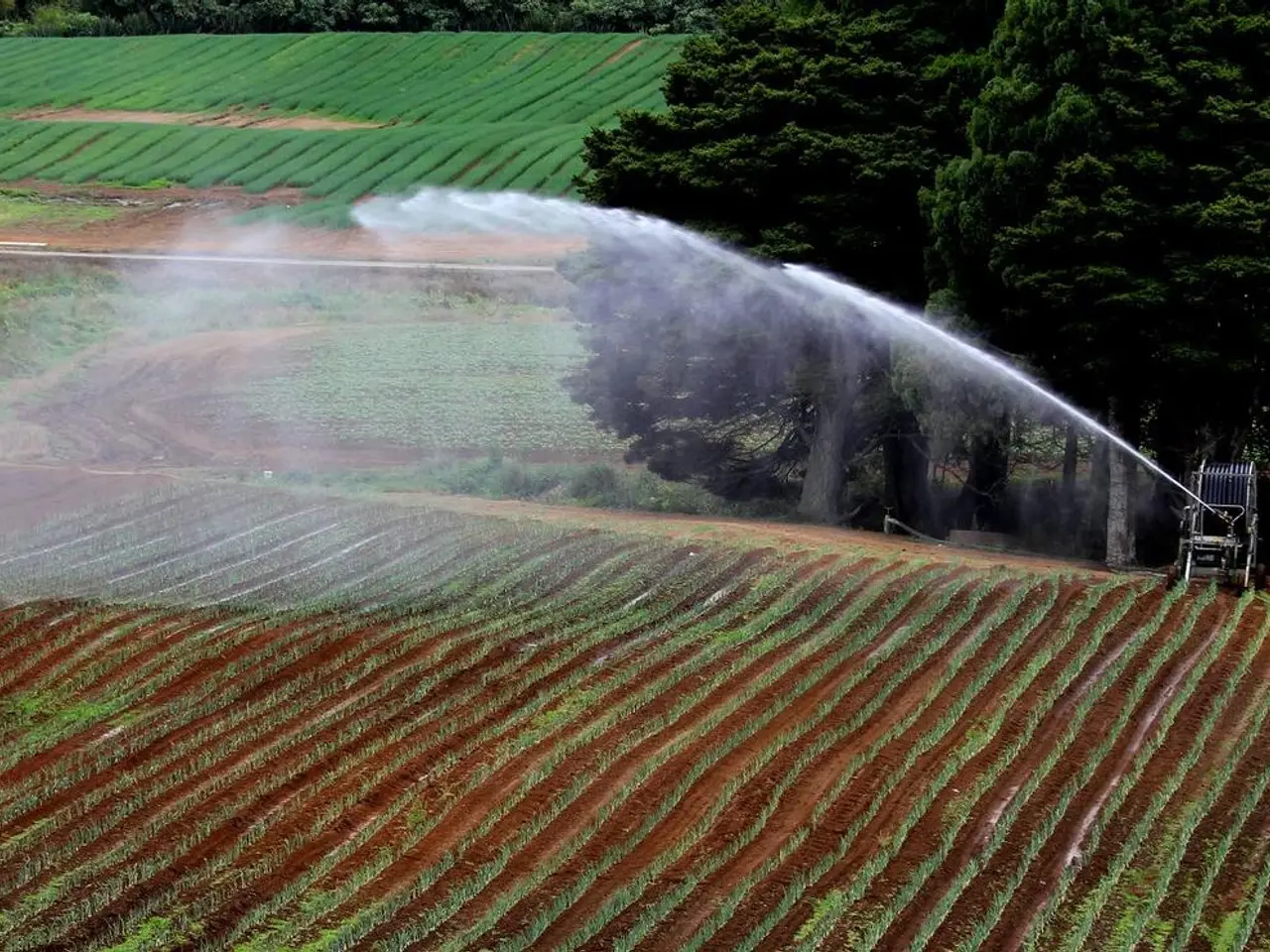Maintaining irrigation systems: Strategies to prevent failures
Maintaining a well-functioning irrigation system is crucial for the health of your landscape and your wallet. Here are some key practices to follow to ensure your system stays in top shape.
Firstly, schedule routine inspections at least once or twice a year, ideally before peak seasons like summer and after winter. These inspections should check for leaks, corrosion, sediment build-up, misaligned or broken sprinkler heads, cracked pipes, malfunctioning valves, and electrical issues in controllers.
Secondly, clean and lubricate moving parts and sprinkler heads frequently to ensure unblocked water flow and proper spray patterns. Remove debris and sediment from nozzles and filters, and adjust sprinkler heads to avoid watering non-landscaped areas such as sidewalks or driveways.
Thirdly, test all valves and control systems regularly. Verify that valves open and close correctly in each zone, check for leaks, and ensure electronic controllers are functioning well, including firmware updates and correct seasonal watering schedules.
Fourthly, adjust watering schedules seasonally based on local weather, soil moisture, and evapotranspiration rates. Early morning or evening watering minimizes water loss due to evaporation.
In addition, perform seasonal services professionally. In spring, turn the system on, inspect for damage, adjust settings to landscape needs, and test all zones. In summer, walk the system while running to identify and fix broken or leaking components. In fall, remove water from the system to prevent freeze damage to pipes, valves, and heads. This is critical for system longevity and usually requires professional service.
Keep detailed maintenance records and logs of inspections, repairs, and seasonal services to track system health over time and help with service contracts or warranty claims.
Consider preventative maintenance programs offered by irrigation service providers that schedule and perform these tasks automatically with preferred pricing and expert care, ensuring consistent upkeep without reliance on user memory.
Quality components and materials can help an irrigation system withstand environmental conditions better, while regular maintenance is essential to keep the system in good condition throughout the year. Regular maintenance can prevent small faults from escalating into major problems, extend the lifespan of the system, and optimize water usage.
In winter or rural areas, pipes can be damaged by ice or animals, necessitating a complete inspection at the start of the season. Installing rain sensors can optimize water usage and prevent unnecessary watering in case of rain. Regularly clean filters and nozzles to prevent lime, sand, or dirt from clogging water flow.
In summary, a well-planned maintenance schedule involves at least biannual inspections, seasonal system startups and winterizations, routine cleaning, valve and controller checks, timely repairs, and adaptive watering schedules based on weather. Regular maintenance is key to the efficiency and longevity of your irrigation system.
Maintaining a vision of an eco-friendly lifestyle can be achieved by incorporating home-and-garden strategies, such as optimal irrigation system care. Regular home-improvement tasks, like seasonal inspections, cleaning, and adjustments, maintain irrigation system health and prolong its lifespan, contributing to water savings.







